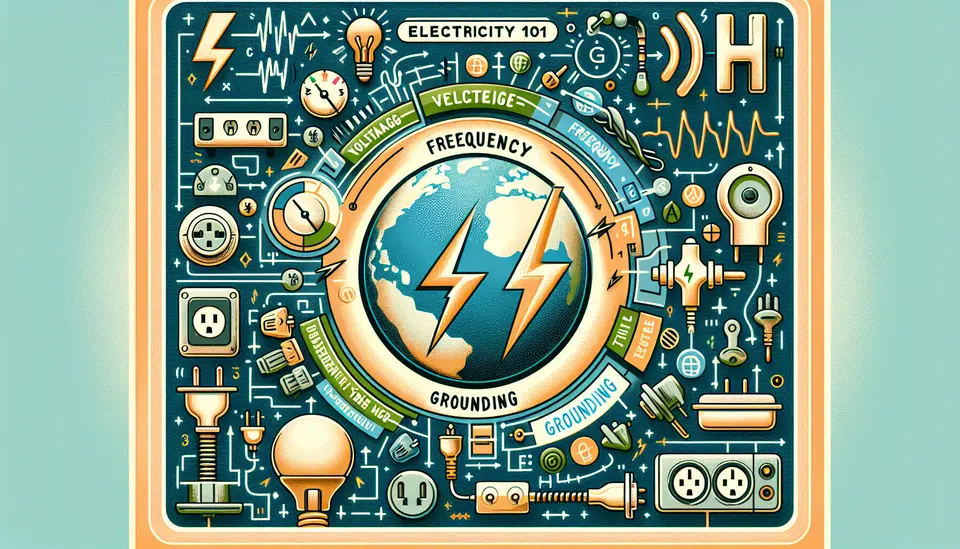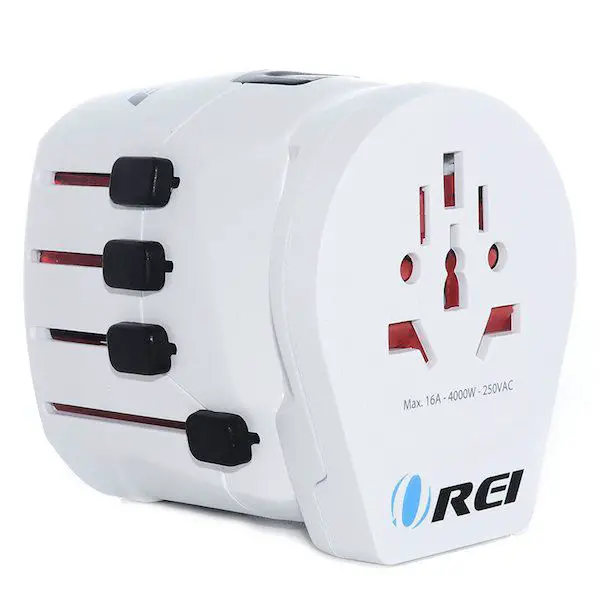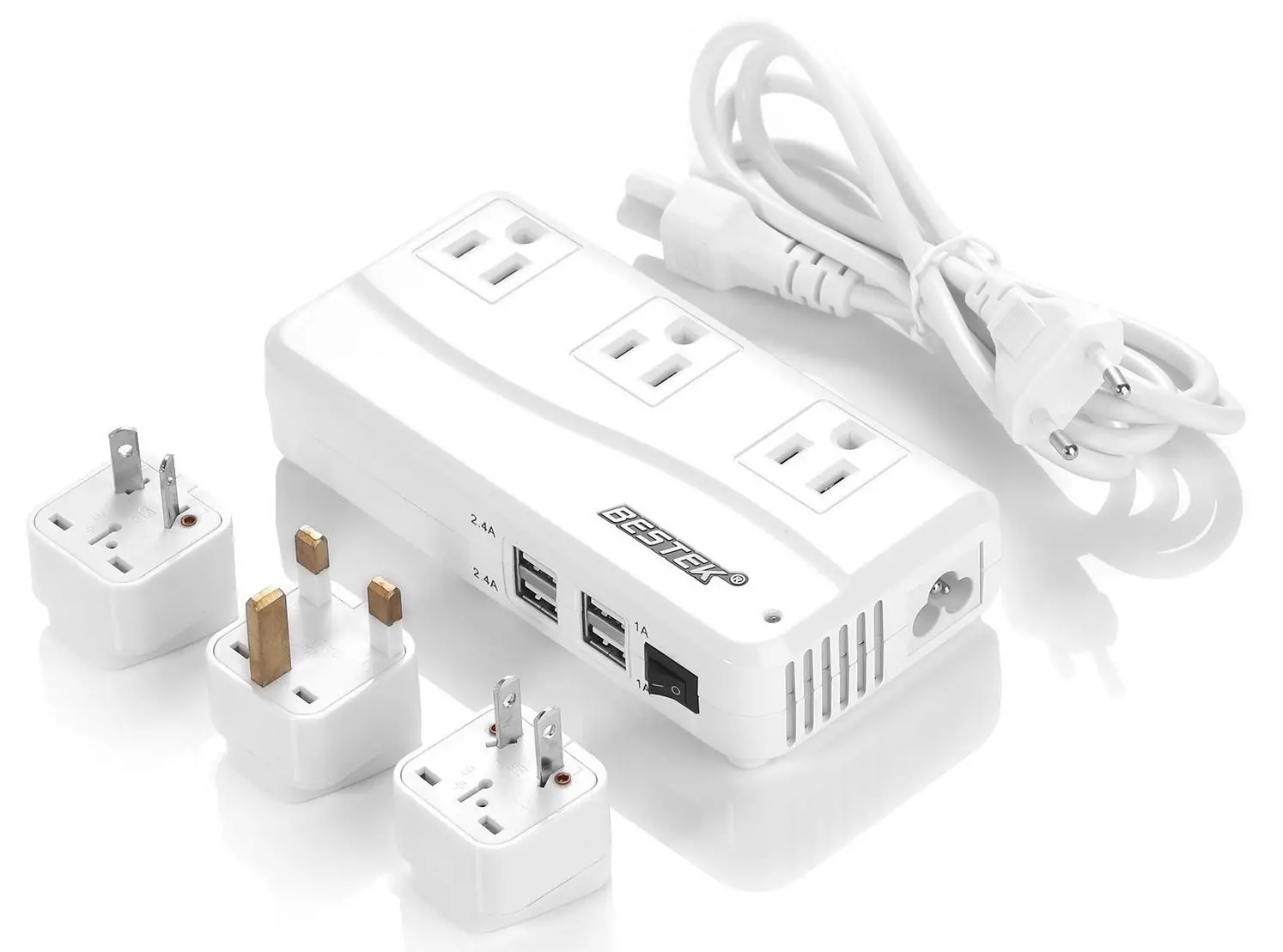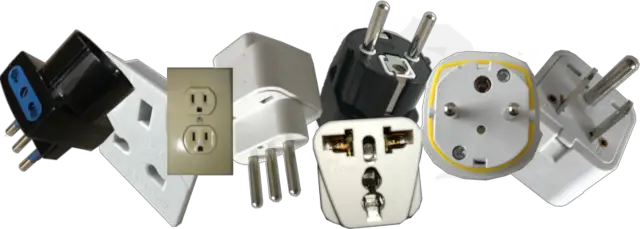Unravel the Mysteries as Taylor Watts guides you through the essentials of traveling with electronics.
Taylor Watts - January 24, 2024
 Electricity 101
Electricity 101
Join travel expert Taylor Watts on a journey through the electrifying basics of voltage, frequency, and grounding - because the only sparks flying should be the metaphorical ones on your adventures!
Electricity 101 for Travelers: Voltage, Frequency, and Grounding Explained ✨
Hey globetrotters! 🌍✈️ It's your trusty travel buddy and aficionado of all things electric, Taylor Watts, here to dazzle you with some high-watt wisdom. While you might be busy daydreaming about your next exotic destination, let's make sure your tech companions are well-prepped for the adventure too! Buckle up, because we're diving into the electrifying world of Voltage, Frequency, and Grounding.
🔌 A Voltage Voyage: Understanding the Power
First thing's first, voltage is basically the pressure that pushes electricity through wires. Imagine it like water pressure in a hose; the higher the pressure, the stronger the water jet. In the electric realm, different countries have different "pressures" which we refer to as voltages. You've got countries running on 110/120 volts (hello, North America!) and others cruising on 220/240 volts (a shout-out to my European friends). This is crucial because your gadgets are designed for a specific voltage range.
Pro tip #1 📝: Always check the label or power adaptor of your devices for their voltage compatibility. A mismatch can lead to a fried phone, and nobody wants that, right?
 A power supply that can handle from 100V up to 240V
A power supply that can handle from 100V up to 240V
💡 Frequency Fundamentals: It's All in the Hertz
Now let's talk frequency, measured in Hertz (Hz), which is kinda like the heartbeat of electricity – it's the rate at which the current alternates. Most countries tick to the tune of either 50 Hz or 60 Hz. This doesn't usually cause too much trouble for travelers, but it can affect the performance of time-sensitive devices like electric clocks. Imagine if your alarm clock starts getting funky abroad – you wouldn't want to miss your dawn hot-air balloon ride over Cappadocia due to a Hertz hiccup!
Pro tip #2 📝: Clocks aren't the only concern; very sensitive devices can be affected too, so double-check if your equipment is a stickler for frequency.
🌐 Grounding: Your Safety Line
Grounding or earthing is all about safety, lovely jet-setters. It keeps you from being the shortest route to Earth for stray voltage (ouch!). A grounding pin (that third round or flat pin on a plug) acts like a gatekeeper, ensuring any electrical mishaps are directed safely into the ground. Not all countries or outlets are grounded, and not all devices require a ground, but for those that do, you definitely want to be sure they're grounded when abroad.
Pro tip #3 📝: If your device has a three-pin plug, it needs grounding, so remember to have a suitable adapter on hand.
 Protected Adapter, notice the red plastic, that is the safety mechanism; get it on Amazon.
Protected Adapter, notice the red plastic, that is the safety mechanism; get it on Amazon.
The Right Adapter Advantage: Plugging Into Knowledge
With voltage, frequency, and grounding in mind, let's chat about how to keep your dear electronics safe and sound while you expand your horizons:
🌟 The Adapter Connection
Adapters don't convert electricity (keep that in mind). They simply allow your plug to fit into a foreign outlet. It's like making sure you have the right key for the lock. Before your journey, research the plug types for your destination with a handy resource like whatplug.info to avoid any plug panic!
 A good quality 220V to 110V adapter
A good quality 220V to 110V adapter
🌟 Converter or Transformer? That is the Question
Converters and transformers change the voltage to match your gadget's needs. A converter is suitable for short-term use with high-wattage devices (like hair dryers), while a transformer is for low-wattage or long-term use (hello, laptop charging sessions!).
🌟 Universal Power Supplies
Some electronics come with a built-in ability to handle various voltages and frequencies—think USB chargers and laptop adapters. Always verify this before relying solely on these versatile wonders.
🚨 Cautionary Tales and Troubleshooting Tricks
We all love carefree travel, but it's better to be a cautious Carrie than a reckless Rita when it comes to your precious gizmos:
- Double-check Your Devices: I can't stress this enough. Look out for "dual voltage" labels; they are your BFFs in international travel.
- Bring Backups: Charge up those power banks, and pack spare chargers. Running out of juice in the middle of nowhere is not a good look.
- Invest in Quality Adapters/Converters: Trust me, the bargain bin at the dollar store is not where you want to pinch pennies. Go for recommended, high-quality adapters.
💖 Wrapping Up the Electric Expedition
Listen up, my nomadic companions: being savvy about voltage, frequency, and grounding doesn't mean you need to be an electrician (wink, wink 😉). It's all about ensuring your travel is as smooth as your most streamlined suitcase. Remember these keywords: check, adapt, convert, and enjoy!
You see, electricity can be a delightful traveling partner, or it can zap your plans faster than you can say "Where's my charger?" So, keep these insights handy! And don't forget to visit us at whatplug.info for deep dives into all things plug and socket-related! 💡
Happy travels, and may your adventures be as charged with excitement as a fully loaded power strip! ✈️🔋
Until next time, keep those tech toys ready for globetrotting glory!
Cheerio,
Taylor Watts ✨
↬ a link from your website helps too.
